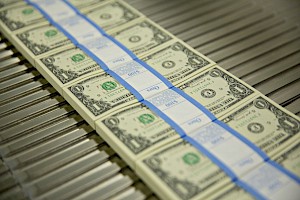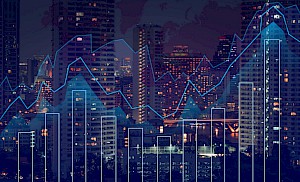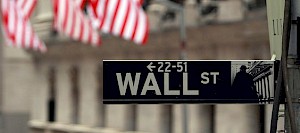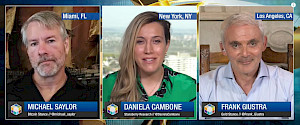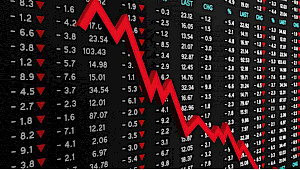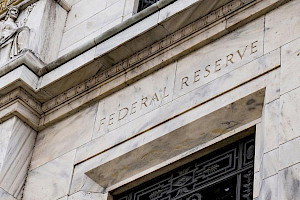The Fed’s big lie that much of the world has bought into
January 10, 2022Originally published in The Toronto Star on December 28, 2021 as contributing columnist
“The human brain is a complex organ with the wonderful power of enabling man to find reasons for continuing to believe whatever it is that he wants to believe.” — Voltaire
We are living in an era that is undeniably confusing, especially to veteran investors. By veteran, I mean someone who has been around long enough to have witnessed a number of market cycles, or at the very least has dusted off a few books on economic history. It almost feels as if there is a universal collective denial of the obvious facts. And, truthfully, I believe there is something much more insidious at play, and the precarious state of the U.S. financial system is, in fact, known to those who pull or influence the levers of monetary policy.
For the better part of 20 years, I have been pointing to the actions of the U.S. Federal Reserve as the root causes of market and housing bubbles, inequality and, more recently, high inflation.
What started out as the occasional Fed reaction to a series of financial crises in the late ’90s, evolved into a permanent “free money” policy that has only benefited Wall Street and the very wealthy. When the inevitable happened and the housing bubble burst in 2008, the Fed and the government’s misguided attempts to bail out the financial system led us into a much more dangerous place. I believe we are now at a point of no return that is unprecedented in history.
In the aftermath of the 2008 financial crisis, then Fed chair Ben Bernanke promised the markets that unwinding quantitative easing (QE) and normalizing interest rates would be possible. I begged to differ at the time, pointing out the mathematical improbability of achieving either without causing another crisis. I predicted that near zero rates and a series of QEs were here to stay. In the dozen years since, they didn’t prove me wrong and, predictably, have only made matters much worse. By keeping rates at near zero and adding several trillions of dollars to the Fed’s balance sheet, the math now makes any return to normality literally impossible. There is simply too much debt in the global system. Normalizing rates would implode the entire system and most asset classes.
But if you listen to Fed chair Jerome Powell, along with almost any of the Wall Street talking heads, you would be led to believe that the current $120-billion (U.S.) monthly QE can be tapered, and that rates can eventually be normalized. In turn, the markets trade as if these words are gospel. It’s as if everyone wishes to be blissfully ignorant of several annoying facts.
The facts, among other things, are that global debt has more than doubled since the 2008 financial crisis to $300 trillion (U.S.). Everyone is levered to the hilt; corporations, hedge funds, individuals and, most importantly, governments. U.S. federal debt has tripled since 2008 and is now touching on $30 trillion. In 2020, the U.S. government spent $371 billion on interest payments on its debt. And that’s at near zero interest rates! If the Fed allowed interest rates to rise in any material way, the U.S. government would either default or — more likely — enter an endless cycle of money printing. Even at current rates and with the ongoing multi-trillion dollar annual budget deficits, the die is cast. We have clearly sailed past the event horizon of an enormous black hole.
There is an aspect of the current situation that policy-makers never acknowledge. After 60 years of Fed fund rates averaging five to six per cent, when the 2008 crisis hit the Fed’s monetary policy then landed us in a permanent range that hovers between zero and slightly above two per cent. All attempts to raise rates above two per cent have failed, mostly due to Wall Street market tantrums. Meanwhile, inflation is hovering around six per cent, which means that real interest rates are deep in negative territory to the tune of -4.5 per cent, if you use the 10-year treasury bonds as a measure.
It’s bizarre that the U.S. markets trade as if these facts exist only in some alternative universe. For instance, one has to wonder why gold is not trading a lot higher. Somehow, the market has been conditioned to believe that higher inflation numbers are bad for gold because it means interest rates will rise. Traditionally, gold has always traded higher and the U.S. dollar trades lower when U.S. inflation rears its head. We are seeing the opposite. The reasoning is perverse. Market players are telling themselves that higher inflation means the Fed will have to raise rates, which we know they can’t. We are rangebound in a negative real rate environment. Americans continue to sell their gold, favouring tech stocks and cryptocurrencies. Meanwhile, the world’s central banks are furiously adding to their gold reserves as they have been for the last 10 years. Makes you wonder.
The same holds true for U.S. stocks. The real earnings yield hasn’t been so low since the late 1940s, according to Bank of America Corp. strategists. The S&P 500 Index currently has a real earnings yield of -2.9 per cent, meaning that without continued growth in company results, investors would lose 2.9 per cent when adjusted for inflation. Yet Americans continue to pile into the market at valuations that have broken with all historical precedent.
So why does the Fed lie and why do market players believe them? Quite simply, the truth would create a panic that nobody wants. They are in an inescapable trap and they know it. The best the Fed can hope for is some divine intervention or, at the very least, that they can kick the can down the road and pray history won’t remember their names. As for Wall Street, they are happy to live day by day encouraging easy money policy to keep the party going.
So the Fed pretends. They choose their words very carefully to ensure that fragile markets don’t get spooked, while appeasing the inflation critics with promises of normalization. Their primary objective these days is to “anchor’” inflation expectations such that it doesn’t become self-reinforcing. They do this by using phrasing like “inflation is only transitory.” (Which they recently dropped.)
“Fed speak” might as well be in tongues for all the insight one can garner from their statements. A typical Fed statement will say something that sounds like, “Maybe soon we will consider tapering the $120-billion monthly QE purchases, but we reserve the right to reinstate QE, which you can infer to mean that interest rates will rise sometime thereafter, but only if market conditions are in perfect harmony and the economy is at full employment and inflation is not too low and Venus aligns with Mars.” In other words, we will stay in this endless cycle until something catastrophic happens.
Economist Mohamed A. El-Erian points to the recklessness of “Fed speak” in a too-polite manner. “At one level, this hesitancy should not come as a huge surprise given the usual behavioural traps: in this case, they include inappropriate framing, confirmation biases, narrative inertia, and resistance to a loss of face. Yet, its persistence in the face of repeatedly contradictory data seriously increases the risk of otherwise-avoidable economic, financial, institutional and social damage.” I would be less polite. These are intelligent people who know exactly what they are doing. Greenspan, Bernanke, Yellen and Powell, while in power, will all do what is expected of them and, as we have witnessed, only become critics once they retire.
In Yuval Noah Harari’s book “Sapiens: A Brief History of Humankind,” he points out that “human beings differentiate ourselves from other life forms by our ability to tell each other (and believe in) stories. These collective delusions — ethics, religion, rule of law, etc. — enable co-operation and progress. One such collective fiction, and a particularly successful one, is money.”
It looks as if we are currently living in a collective delusion of money and markets, aided and abetted by a loosely aligned club of players. God help us.




